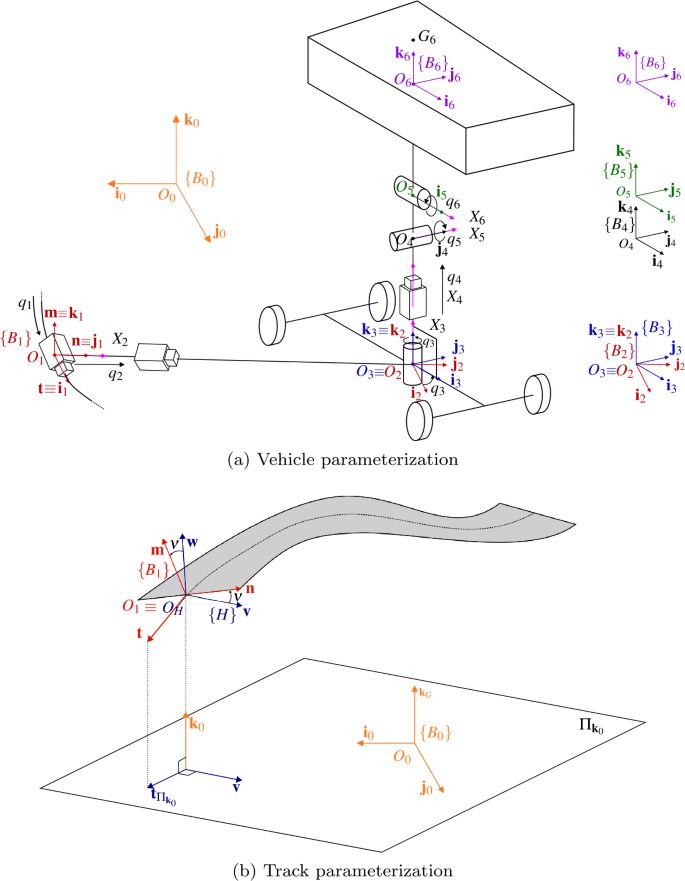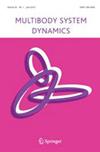A consensus-based alternating direction method of multipliers approach to parallelize large-scale minimum-lap-time problems
IF 2.4
2区 工程技术
Q2 MECHANICS
引用次数: 0
Abstract
Abstract Minimum-lap-time planning (MLTP) problems, which entail finding optimal trajectories for race cars on racetracks, have received significant attention in the recent literature. They are commonly addressed as optimal control problems (OCPs) and are numerically discretized using direct collocation methods. Subsequently, they are solved as nonlinear programs (NLPs). The conventional approach to solving MLTP problems is serial , whereby the resulting NLP is solved all at once. However, for problems characterized by a large number of variables, distributed optimization algorithms, such as the alternating direction method of multipliers (ADMM), may represent a viable option, especially when multicore CPU architectures are available. This study presents a consensus-based ADMM approach tailored to solving MLTP problems through a distributed optimization algorithm. The algorithm partitions the problem into smaller subproblems based on different sectors of a track, distributing them among multiple processors. ADMM is then used to ensure consensus among the distributed computational processes. In particular, here the term “consensus” denotes the requirement for each subproblem to achieve mutual agreement across the junction areas. The paper also outlines specific strategies leveraging domain knowledge to improve the convergence of the distributed algorithm. The ADMM approach is validated against the serial approach, and numerical results are presented for both single-lap and multilap scenarios. In both cases, the ADMM approach proves superior for problem dimensions of 70k+ variables compared to serial methods. In planning scenarios with complex vehicle models on long track horizons, i.e., for problems with 1M+ variables, the efficiency gain of the ADMM approach is substantial, and it becomes the only viable option to maintain computational times within acceptable limits.

基于共识的乘法器交替方向法并行化大规模最小圈速问题
最小单圈时间规划(MLTP)问题是求解赛车在赛道上的最优运动轨迹的问题,近年来受到了广泛关注。它们通常被称为最优控制问题(ocp),并使用直接配置方法进行数值离散化。然后,将其求解为非线性规划(nlp)。解决MLTP问题的传统方法是串行的,由此产生的NLP被一次性解决。然而,对于以大量变量为特征的问题,分布式优化算法,如乘法器的交替方向方法(ADMM),可能是一个可行的选择,特别是当多核CPU架构可用时。本研究提出了一种基于共识的ADMM方法,通过分布式优化算法来解决MLTP问题。该算法根据轨道的不同扇区将问题划分为更小的子问题,并将其分配给多个处理器。然后使用ADMM来确保分布式计算进程之间的一致性。特别地,这里的术语“共识”表示每个子问题在连接区域之间实现相互一致的需求。本文还概述了利用领域知识提高分布式算法收敛性的具体策略。将ADMM方法与串行方法进行了对比验证,并给出了单圈和多圈情况下的数值结果。在这两种情况下,与串行方法相比,ADMM方法在70k+变量的问题维度上证明了优越性。在规划具有长轨道视野的复杂车辆模型的场景中,即对于具有1M+变量的问题,ADMM方法的效率增益是可观的,并且它成为将计算时间保持在可接受范围内的唯一可行选择。
本文章由计算机程序翻译,如有差异,请以英文原文为准。
求助全文
约1分钟内获得全文
求助全文
来源期刊
CiteScore
6.00
自引率
17.60%
发文量
46
审稿时长
12 months
期刊介绍:
The journal Multibody System Dynamics treats theoretical and computational methods in rigid and flexible multibody systems, their application, and the experimental procedures used to validate the theoretical foundations.
The research reported addresses computational and experimental aspects and their application to classical and emerging fields in science and technology. Both development and application aspects of multibody dynamics are relevant, in particular in the fields of control, optimization, real-time simulation, parallel computation, workspace and path planning, reliability, and durability. The journal also publishes articles covering application fields such as vehicle dynamics, aerospace technology, robotics and mechatronics, machine dynamics, crashworthiness, biomechanics, artificial intelligence, and system identification if they involve or contribute to the field of Multibody System Dynamics.

 求助内容:
求助内容: 应助结果提醒方式:
应助结果提醒方式:


